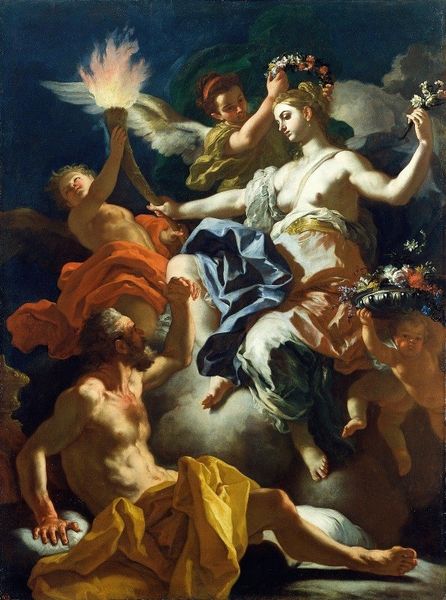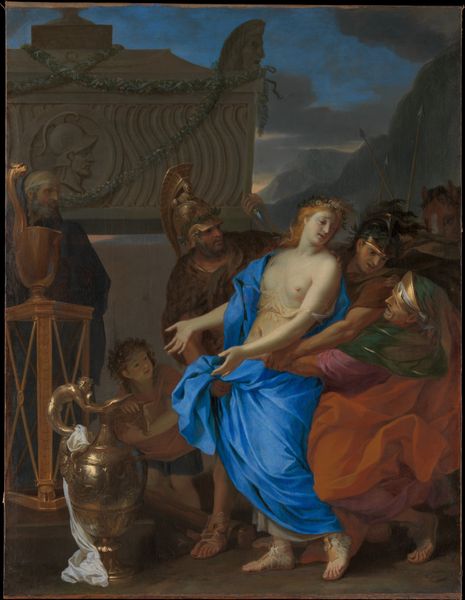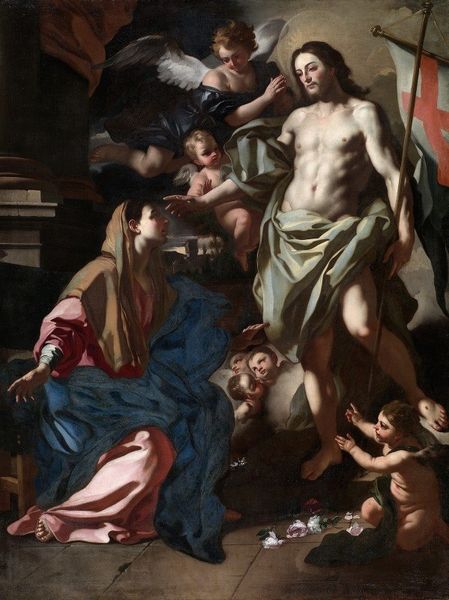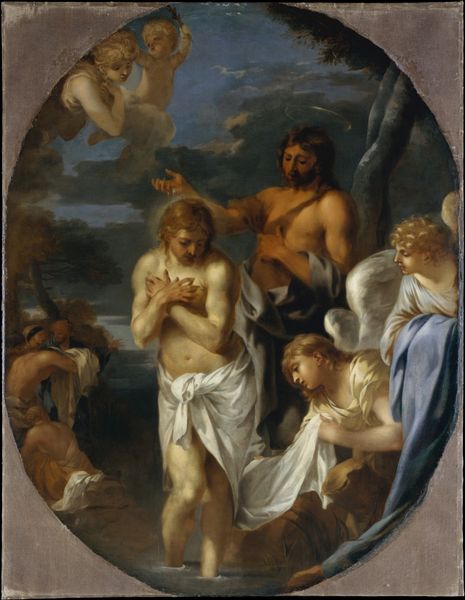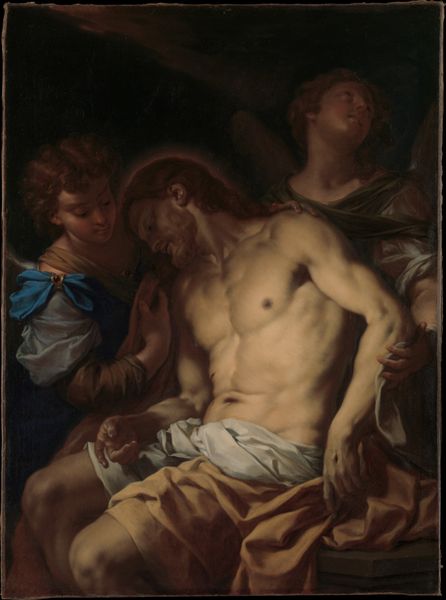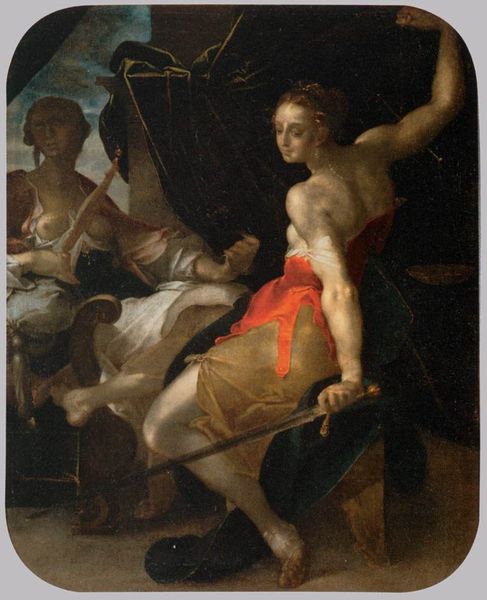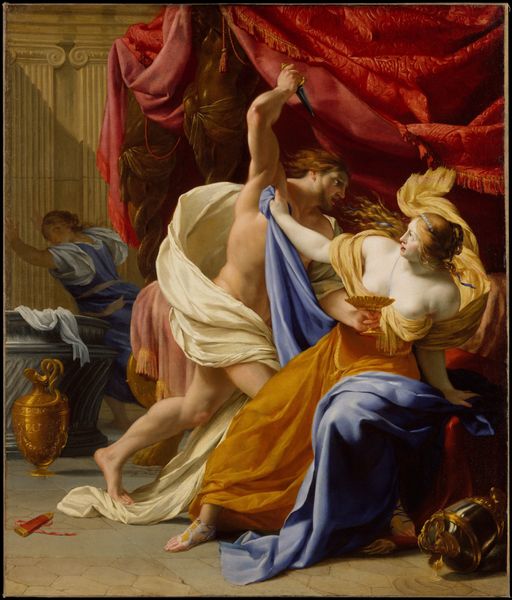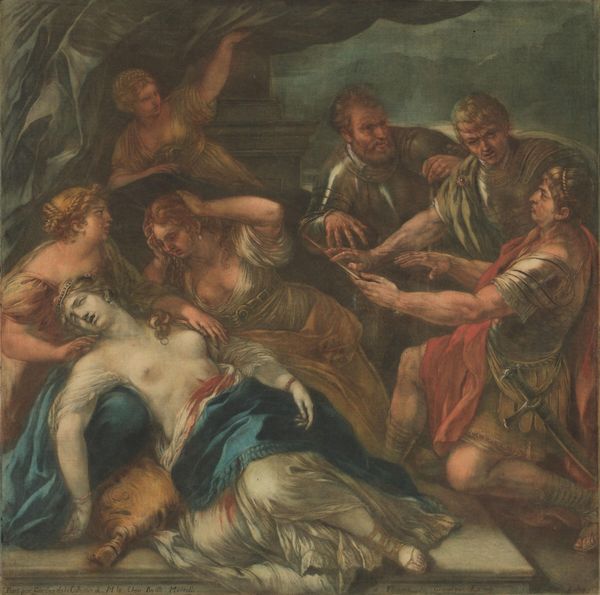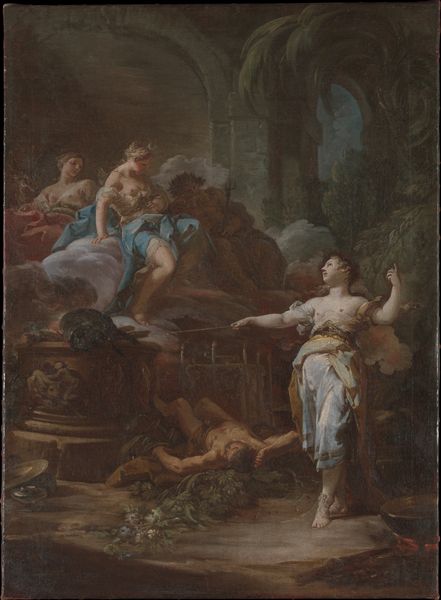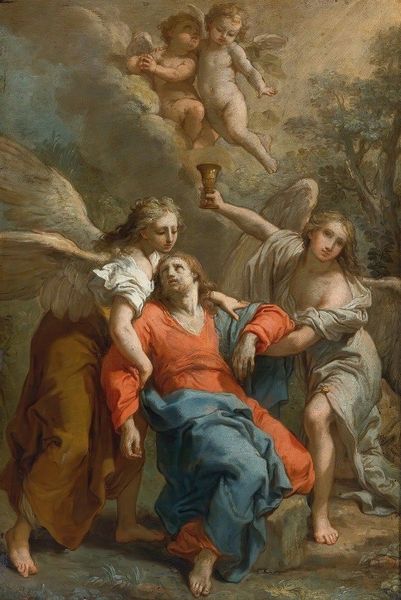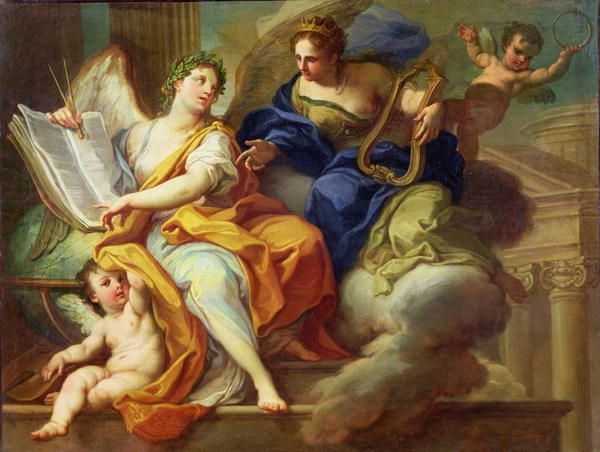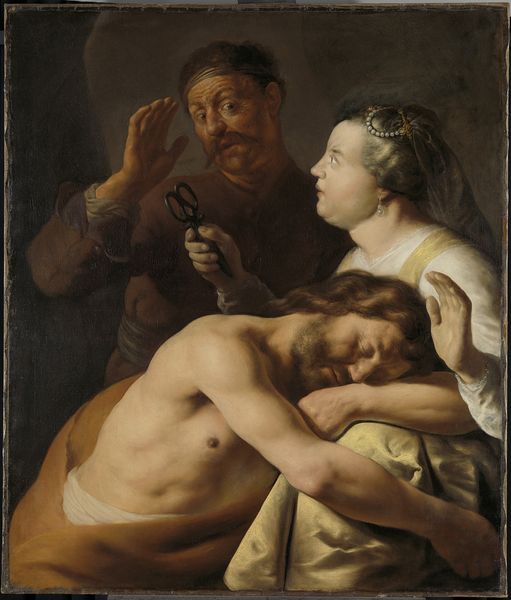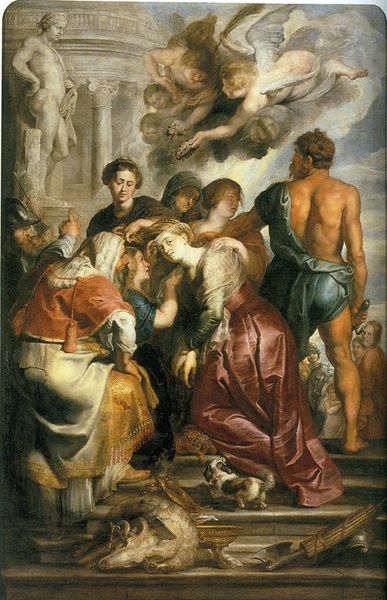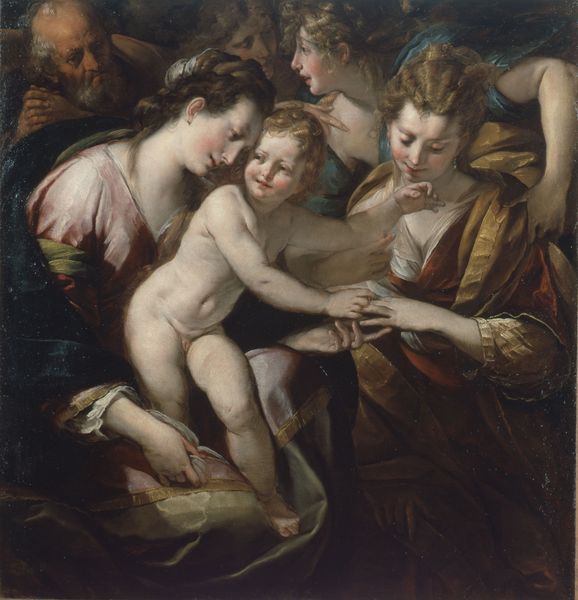
painting, oil-paint
#
portrait
#
allegory
#
baroque
#
painting
#
oil-paint
#
figuration
#
oil painting
#
chiaroscuro
#
history-painting
#
portrait art
Dimensions: 63 x 46 1/2 in. (160 x 118.1 cm)
Copyright: Public Domain
Editor: So, here we have "The Penitent Magdalen" by Corrado Giaquinto, made sometime between 1745 and 1755, an oil painting currently housed at the Met. It strikes me as deeply melancholic; her posture, the skull, it all points to remorse and reflection. What do you see in this piece? Curator: I'm drawn to the iconography Giaquinto employs. Look closely at the skull beside her book—a clear memento mori. It's not just about death, but about the transient nature of earthly pleasures versus eternal salvation. It reminds us how powerfully symbolic objects were in conveying complex religious ideas during the Baroque era. Editor: That's fascinating! I hadn't considered the contrast so explicitly. So, the book, would that signify knowledge or scripture in this context? Curator: Precisely. The book and the skull together symbolize the choice between earthly and spiritual knowledge. Consider the angels too; they add another layer. The cherubs looking down aren't simply decorative; they're divine witnesses to her transformation, connecting the earthly scene with the heavenly realm. See how the gesture emphasizes the themes of divine intervention, memory, and renewal. Editor: It's interesting how the artist balances symbols of death and repentance with the hope of forgiveness through those angels. Curator: Exactly! That's the power of religious symbolism at play. It speaks to deep-seated anxieties and desires about mortality and redemption, reflecting not just individual stories, but broader cultural anxieties. Did you notice anything else about her appearance that seems to symbolize an inner change? Editor: Her dishevelled hair and simple clothing suggest she has given up the pleasures of material possessions, but it wasn’t immediately obvious without the additional symbolism. Curator: Well, I think that is the true beauty of art – our changing perceptions can lead us to further, perhaps deeply personal, realisations. Editor: It is incredible how much can be conveyed through these symbols once you start to understand their cultural weight!
Comments
No comments
Be the first to comment and join the conversation on the ultimate creative platform.
